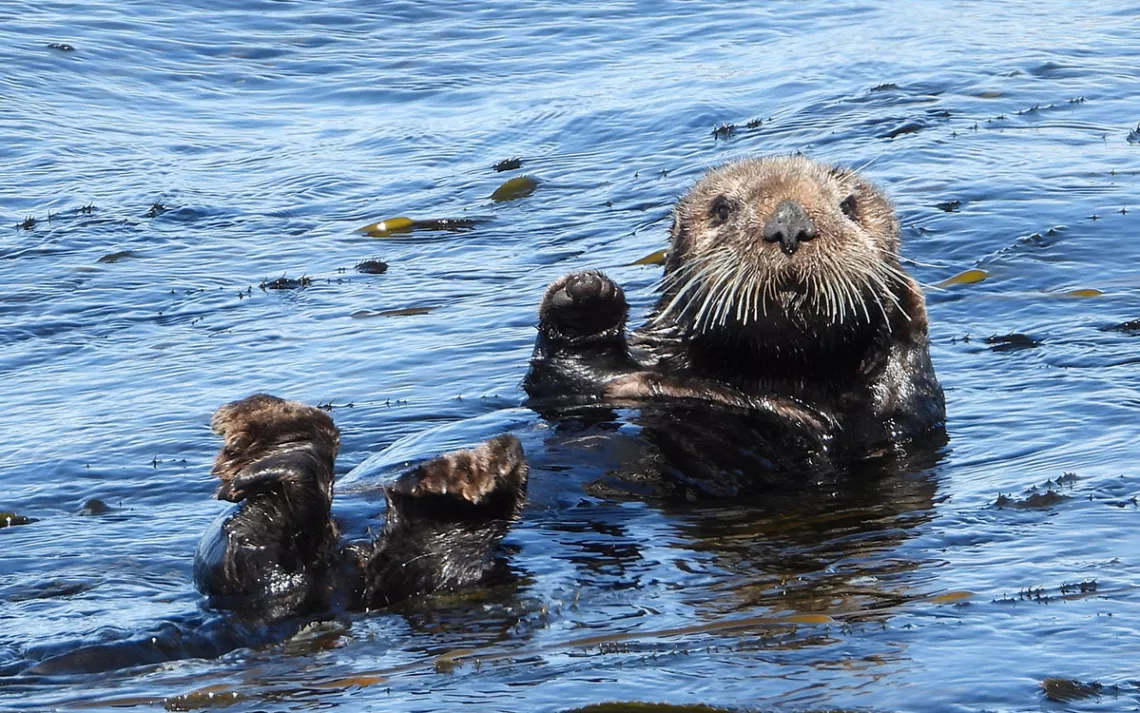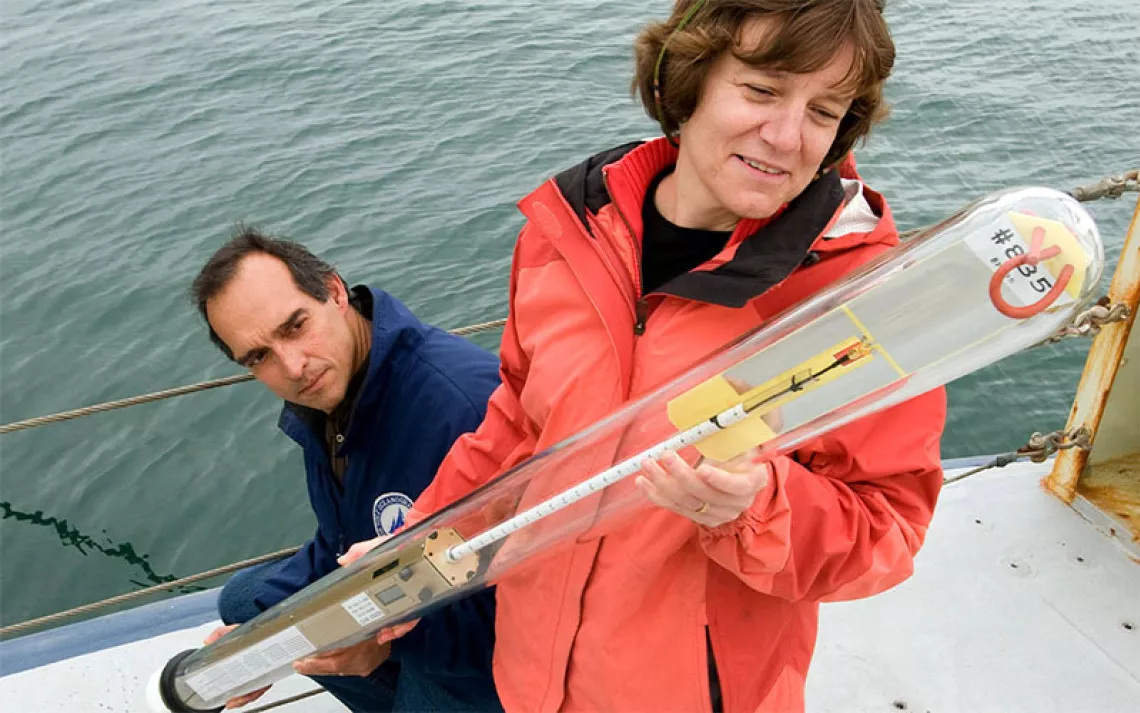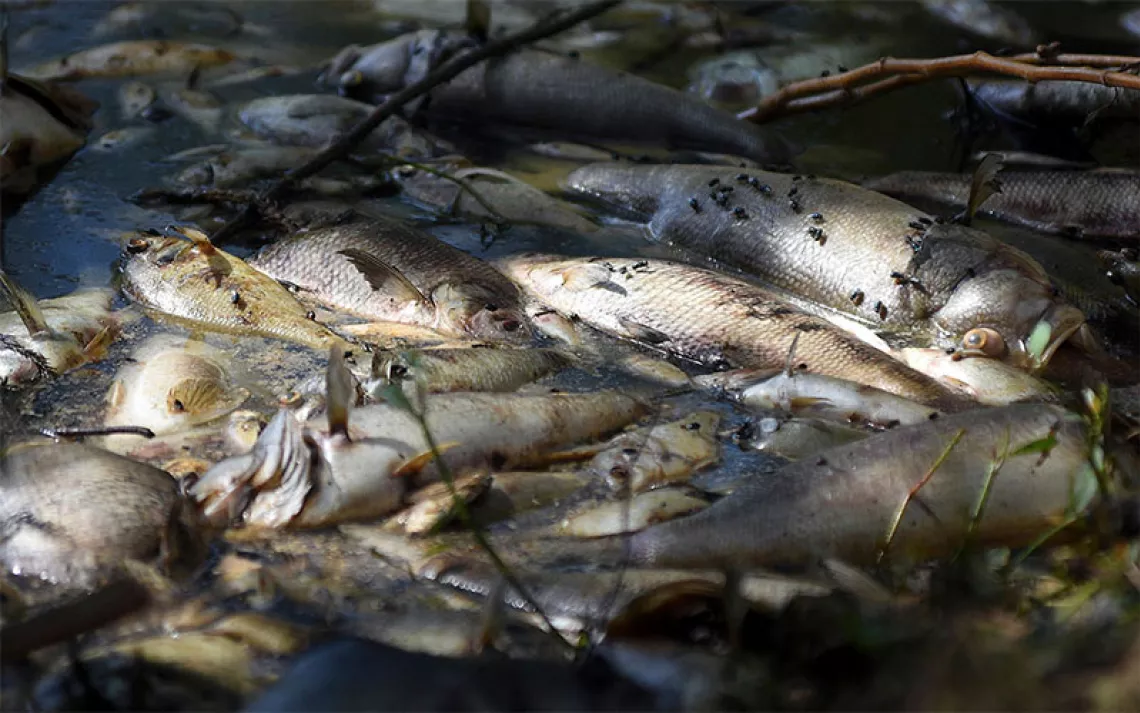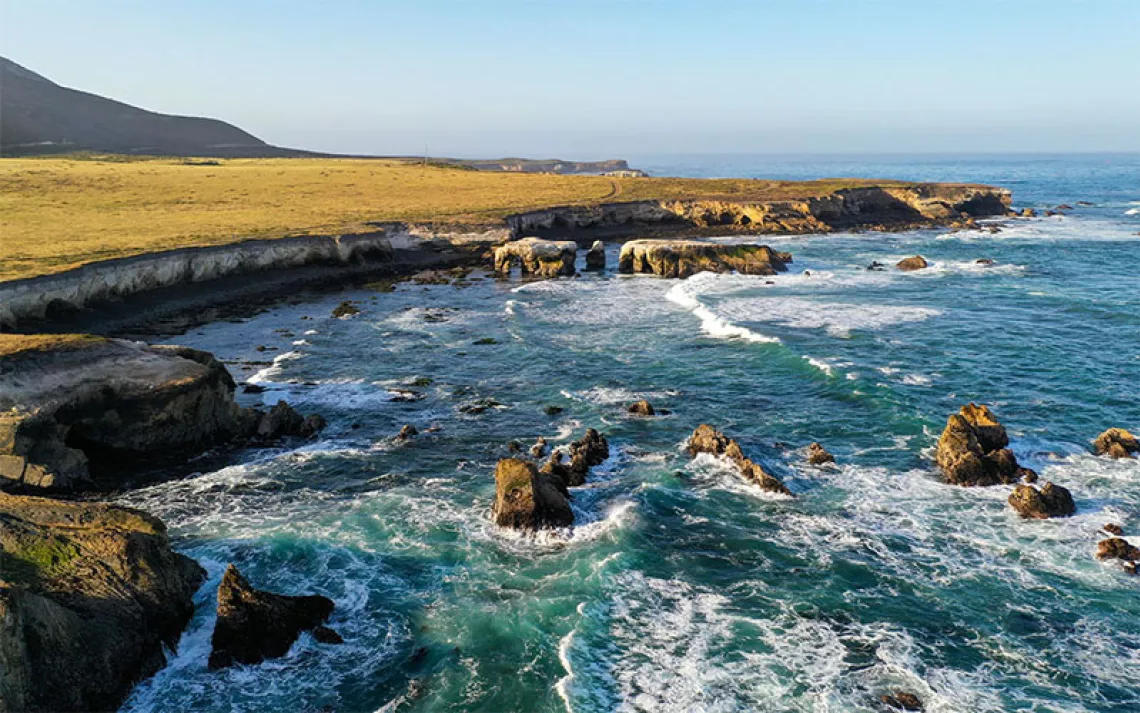Sea Otters Are the Unlikely Heroes Helping to Restore a Marine Ecosystem
Researchers find these top predators play a key role in stabilizing the salt marshes of Monterey Bay

A sea otter in Monterey, California. | Photo by Mats Rennstam/iStock
At first glance, Elkhorn Slough shouldn’t be doing very well. The wetland reserve in California’s Monterey Bay is tucked among housing developments, ranches, and farms. Nutrient runoff helps create slicks of algae so thick they smother plants. In addition, for over a century the salt marshes that help stabilize the estuary in the bay have been besieged by shore crabs, which burrow and feed on pickleweed roots. The colorful native crabs decimate this vegetation that would otherwise stabilize creek banks.
“You walk across the marsh there—it’s like Swiss cheese,” Christine Angelini, the director of the Center for Coastal Solutions, said. “It’s not like there’s a couple of crab burrows. The whole landscape is riddled with them."
The uncontrolled crab population, when combined with other destabilizing forces, causes pieces of the marsh to essentially collapse into the water. And once that land is gone, conservation organizations would need to invest a large amount of money and effort into restoring the habitat.
But in recent years, the slough has gained an unexpected ally in the form of a very hungry and very cute hero. Sea otters began returning to the slough in the 1980s, aided by local conservation efforts and later the release of rehabilitated otters.
Now, researchers recognize these recovering otter populations are more than a successful reintroduction story. These apex predators are keystone species that influence the whole marsh from the top down. According to new research published in Nature, sea otters are helping to slow erosion in the salt marshes. With their voracious appetites, otters have created a cascading effect on the food web, reducing the burrowing shore crab population and dramatically slowing erosion rates.
Sea otters were once ubiquitous along the Pacific coast, their range stretching from Alaska to Mexico. Then, for several decades, starting in the late 16th century, white settlers hunted them to near extinction along the coast of what is now California.
Remnant populations abandoned most of their old range and sought refuge in the kelp forests along the coast. They were gone so long that many people forgot they also existed in the salt marshes and estuaries. Otters returned slowly at first. A couple of males that were too young or too old to compete for other, more favorable, territories started hanging out in the slough for short periods of time. Enough eventually stayed long enough that females arrived and they started breeding. When combined with a program that released rehabilitated otters into the slough, these charismatic apex predators began to thrive in the marsh.
For Brent Hughes, an associate professor at Sonoma State University and lead author of the paper, the resurgent otter population created a prime opportunity to study the role sea otters play in influencing seagrass health in the estuary. At first, Hughes didn’t consider the otters at all, and he ruled out a couple of possibilities, including El Niño events and storm patterns. Then, he noted predators using seagrass beds. His research showed that the otters’ appetite for crabs cascaded through the food web in a way that helped seagrass expand. As Hughes was chasing sea otters around the estuary, he noticed the predators in the salt marsh.
“Nobody had ever seen that before, at least in recent history,” Hughes said. “It presented a unique opportunity to look and see how a recovering top predator might affect erosion and the geology of the system.”
Hughes and the rest of the team knew a lot about the Elkhorn Slough populations. They had records of when otters arrived, how many were present, and 35,000 observations of sea otters eating in the tidal creeks. Unlike other top predators whose eating habits are difficult to observe, otters bring their prey to the surface so observers can note what they’re eating.
Researchers surveyed otter and crab populations, the biomass of salt marsh plants, erosion measurements, and predation of shore crabs. They used this data to examine how the recovery of sea otters in the slough affected predation of shore crabs and erosion. As sea otters ate more crabs, erosion rates went down.
Experiments to examine the ecosystem effects of top predator recovery are often quite difficult to conduct. Most studies on the recovery of top predators rely on only correlational data. In this study, the authors were able to conduct an experiment by caging off areas in the marsh for three years. Otters couldn’t access the caged areas, so the researchers were able to compare the number of crabs and burrows and the amount of plant matter in areas with and without otters.
Compared with creeks with low sea otter populations, creeks in Elkhorn Slough with high densities of sea otters had 69 percent lower erosion rates. The apex predators need to eat about 25 percent of their body weight each day. Their appetites ultimately reduced the shore crab population to the point where they were no longer numerous enough to seriously exacerbate erosion.
“It’s pretty evident that top predators can have a really important structuring role in these ecosystems,” Hughes said. “I’m not saying we should start putting predators in all the different ecosystems, but they should be considered when people are making decisions on how to best restore an ecosystem.”
Max Castorani, a marine ecologist at the University of Virginia who was not involved with the study, said a common critique of ecology studies is that they don’t adequately consider other factors that could produce the results. But Hughes and his coauthors analyzed long-term data and experimental evidence that all point to the otters driving this reduction in erosion and carefully considered other possible mechanisms.
“I think this is another line of evidence that there are potential ecological and conservation benefits to bringing back predators,” Castorani said.
Elkhorn Slough is far from the first example of a top predator recovery cascading through the food web and positively affecting the whole ecosystem. Perhaps the most famous example of this is the reintroduction of Yellowstone wolves, which led to a better managed deer and elk population, the rebound of willow and aspen, the stabilization of river banks, and the return of other animals.
Angelini, also a coauthor of the research paper, said the positive impacts of otters' predation on the reserve were astonishing. That being said, the otters didn’t reverse erosion that had already occurred, but they were very effective at slowing down erosion.
Similar estuaries suffer from the same challenges as Elkhorn Slough. If salt marshes continue to disintegrate due to algal blooms and rising sea levels, they won’t be able to sequester carbon effectively, filter contaminants, and protect the shoreline. But along the Pacific coast, optimistic researchers watch as recovering otter populations begin moving into other estuary systems, according to Tim Tinker, a coauthor of the paper. California, Oregon, and Washington are seeing more otters in estuaries as the populations recover.
“We’re interested in learning about these dynamics in particular because it’s going to tell us something that we can look forward to,” Tinker said.
When it comes to other conservation projects, Angelini said the lessons from this paper can be applied in other areas. For example, in Florida many estuaries suffer from nutrient pollution. While conservationists still need to address issues like nitrate pollution and sea level rise, they also can take advantage of native predators and food webs to achieve some “quick wins.”
This article has been updated to reflect Christine Angelini's preferred title.
 The Magazine of The Sierra Club
The Magazine of The Sierra Club







